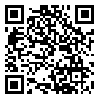Volume 70, Issue 5 (5 2012)
Tehran Univ Med J 2012, 70(5): 282-288 |
Back to browse issues page
Download citation:
BibTeX | RIS | EndNote | Medlars | ProCite | Reference Manager | RefWorks
Send citation to:



BibTeX | RIS | EndNote | Medlars | ProCite | Reference Manager | RefWorks
Send citation to:
A A B, S J, H P, F N. The effects of temperature and birth weight on the transition rate of hypothermia in hospitalized neonates using Markov models. Tehran Univ Med J 2012; 70 (5) :282-288
URL: http://tumj.tums.ac.ir/article-1-111-en.html
URL: http://tumj.tums.ac.ir/article-1-111-en.html
1- , akbarzad@sbmu.ac.ir
Abstract: (8490 Views)
Background: Hypothermia is an important determinant of survival in newborns, especially among
low-birth-weight ones. Prolonged hypothermia leads to edema, generalized hemorrhage, jaundice and ultimately death. This study was undertaken to examine
the factors affecting transition from hypothermic state in neonates.
Methods: The study consisted of 439 neonates hospitalized in NICU of Valiasr in Tehran, Iran in 2005. The neonates' rectal temperature was measured immediately after birth and every 30 minutes afterwards, until neonates passed hypothermia stages. In order to estimate the rate of transition from neonatal hypothermic state, we used multi-state Markov models with two covariates, birth weight and environmental temperature. We also used R package to fit the model.
Results: Estimated transition rates from severe hypothermia and mild hypothermia were 0.1192 and 0.0549 per minute, respectively. Weight had a significant effect on transition from hypothermia to normal condition (95% CI: 0.1364-0.4165, P<0.001). Environmental temperature significantly affected the transition from hypothermia to normal stage (95% CI: 0.0439-0.4963, P<0.001).
Conclusion: The results of this study showed that neonates with normal weight and neonates in an environmental temperature greater than 28 °C had a higher transition rate from hypothermia stages. Since birth weight at the time of delivery is not under the control of medical staff, keeping the environmental temperature in an optimum level could help neonates to pass through the hypothermiastages faster.
Methods: The study consisted of 439 neonates hospitalized in NICU of Valiasr in Tehran, Iran in 2005. The neonates' rectal temperature was measured immediately after birth and every 30 minutes afterwards, until neonates passed hypothermia stages. In order to estimate the rate of transition from neonatal hypothermic state, we used multi-state Markov models with two covariates, birth weight and environmental temperature. We also used R package to fit the model.
Results: Estimated transition rates from severe hypothermia and mild hypothermia were 0.1192 and 0.0549 per minute, respectively. Weight had a significant effect on transition from hypothermia to normal condition (95% CI: 0.1364-0.4165, P<0.001). Environmental temperature significantly affected the transition from hypothermia to normal stage (95% CI: 0.0439-0.4963, P<0.001).
Conclusion: The results of this study showed that neonates with normal weight and neonates in an environmental temperature greater than 28 °C had a higher transition rate from hypothermia stages. Since birth weight at the time of delivery is not under the control of medical staff, keeping the environmental temperature in an optimum level could help neonates to pass through the hypothermiastages faster.
Keywords: birth weight, environmental, hypothermia, multi-state Markov models, neonatal, temperature, transition rate
Send email to the article author
| Rights and permissions | |
 |
This work is licensed under a Creative Commons Attribution-NonCommercial 4.0 International License. |





